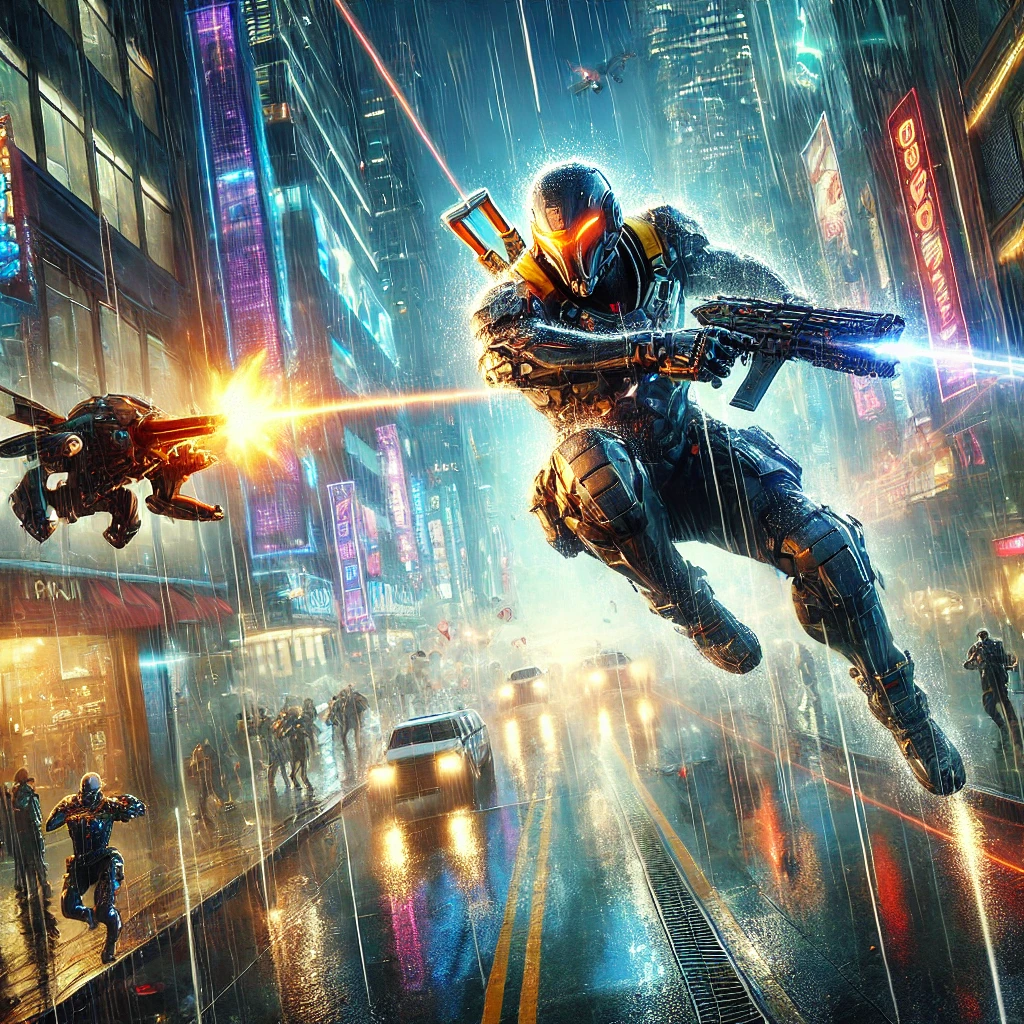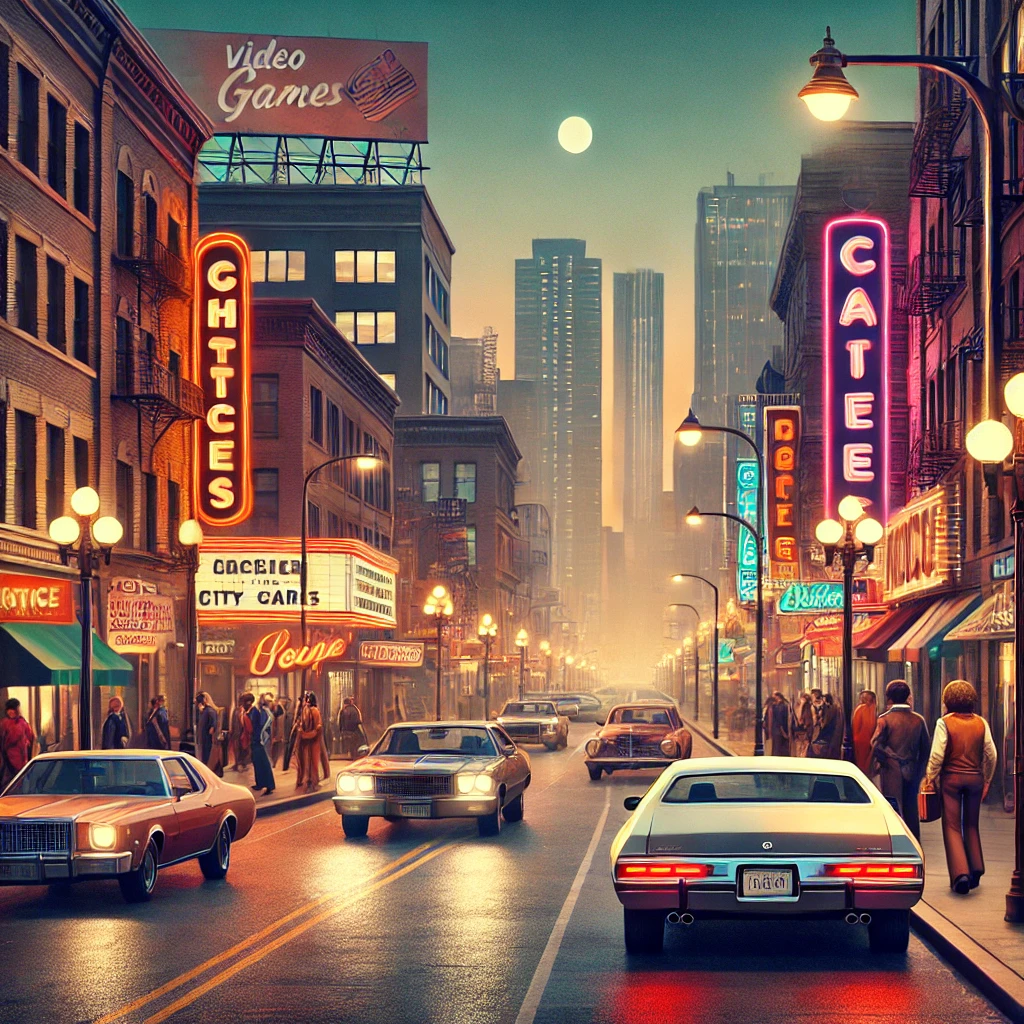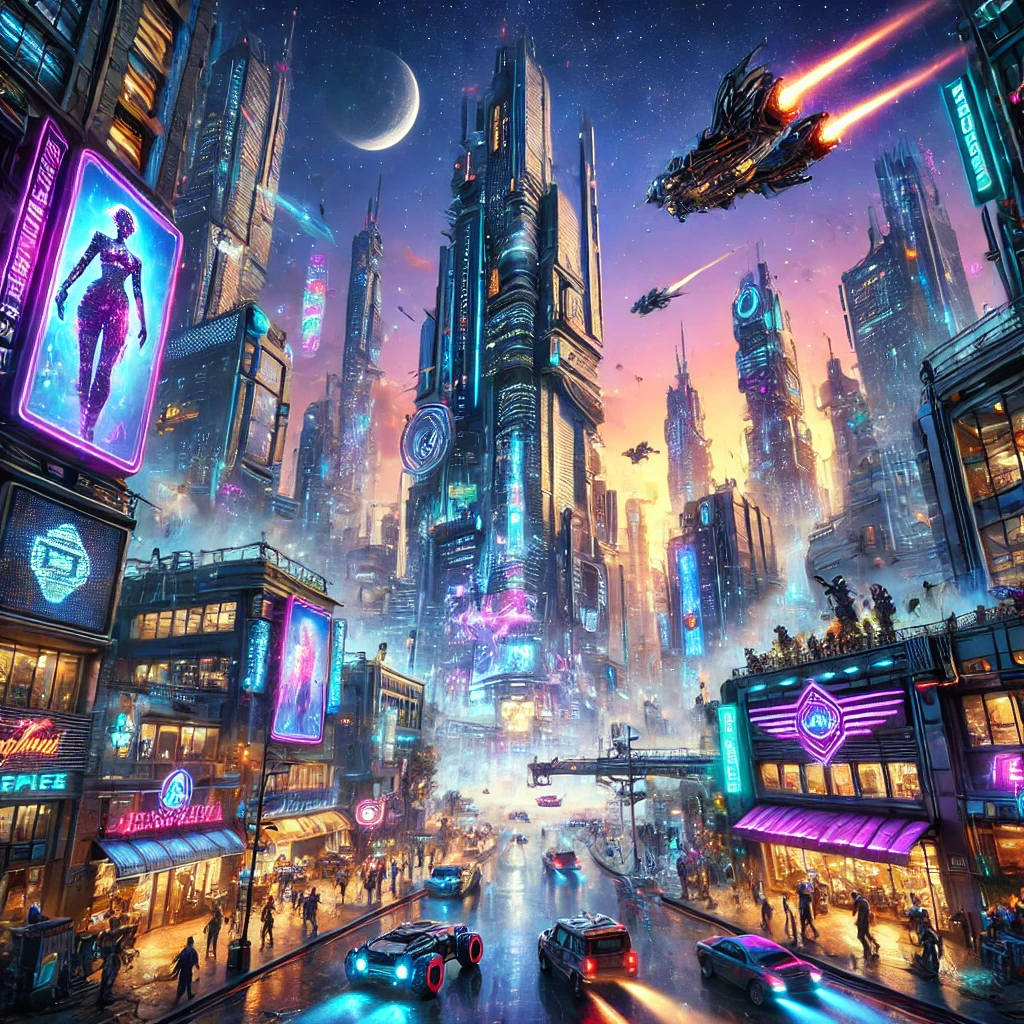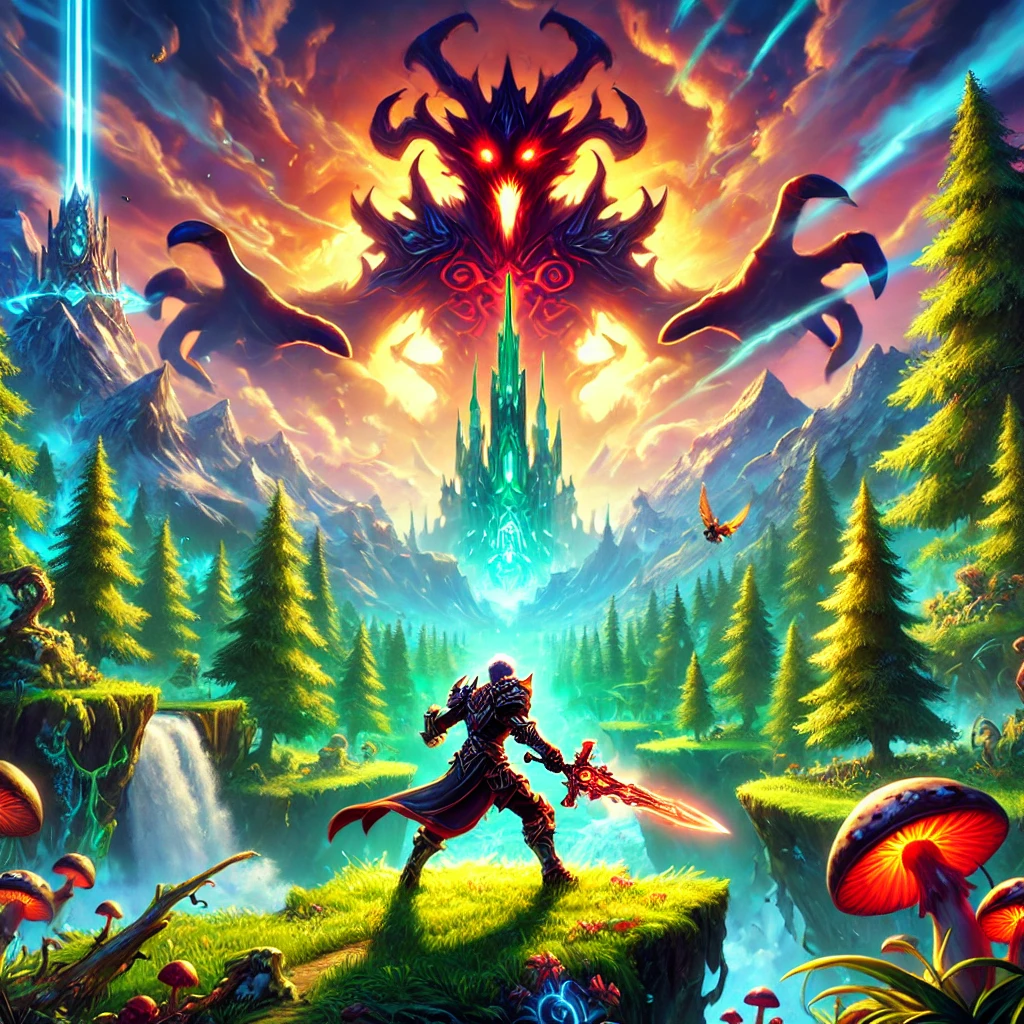Table of Contents Show
Introduction
Video games have evolved from simple pixelated graphics and basic mechanics into a complex, multifaceted medium capable of delivering deep narratives, immersive worlds, and engaging gameplay. The industry has grown exponentially, transforming from niche entertainment into a global cultural phenomenon. But not all video games are created equal. While many games are good, only a few achieve greatness – those that leave a lasting impact, not just on the players, but on the industry as a whole. This article delves into what makes a good video game great, exploring the elements that elevate certain titles above the rest, supported by relevant examples.
1. Compelling Storytelling
One of the most significant factors that can elevate a video game from good to great is its ability to tell a compelling story. While not every game needs to be narrative-driven, those that do it well often leave a lasting impression on players. Great storytelling in games often involves well-developed characters, a gripping plot, and emotional engagement.
Example: The Last of Us (2013)
Naughty Dog’s The Last of Us is often cited as one of the greatest video games of all time, primarily due to its masterful storytelling. The game tells the harrowing tale of Joel and Ellie, two survivors navigating a post-apocalyptic world. The narrative is deeply emotional, exploring themes of loss, survival, and the complexities of human relationships. The characters are well-developed, and their journey is both heart-wrenching and exhilarating. The storytelling is so powerful that it transcends the medium, resonating with players on a profound level.
Example: Red Dead Redemption 2 (2018)
Rockstar Games’ Red Dead Redemption 2 is another prime example of storytelling done right. The game offers an epic narrative set in the dying days of the American Wild West. The protagonist, Arthur Morgan, is a complex character whose internal struggles and moral dilemmas are as compelling as the external conflicts he faces. The game’s attention to detail in its world-building and character development helps create an immersive and emotionally engaging experience, making it a standout example of narrative excellence in gaming.
2. Innovative Gameplay Mechanics
While a compelling story can make a game memorable, innovative gameplay mechanics are often what make it fun and engaging. Great games often introduce new ways to play or refine existing mechanics to perfection, ensuring that the gameplay itself is a rewarding experience.
Example: Portal (2007)
Valve’s Portal is a shining example of innovative gameplay. The game introduces the concept of the “portal gun,” a device that allows players to create portals on flat surfaces, enabling them to navigate the game’s puzzles in a unique and mind-bending way. The gameplay mechanics are simple yet innovative, providing a fresh and intellectually stimulating experience that sets it apart from other games. Portal’s clever design and novel mechanics have earned it a place in the pantheon of great video games.
Example: The Legend of Zelda: Breath of the Wild (2017)
Nintendo’s The Legend of Zelda: Breath of the Wild revolutionized open-world gameplay with its vast, dynamic environment and the freedom it offers to players. Unlike many open-world games that rely on waypoints and linear progression, Breath of the Wild encourages exploration and experimentation. The game’s physics-based interactions and chemistry engine allow for creative problem-solving, making each player’s experience unique. This innovative approach to gameplay has been widely praised and has set a new standard for open-world games.

3. Immersive World-Building
A well-crafted game world can make the difference between a good game and a great one. Immersive world-building involves creating a setting that feels alive, with its own history, culture, and ecosystem. When done well, it can draw players into the game, making them feel like they are part of the world rather than just playing a game.
Example: The Elder Scrolls V: Skyrim (2011)
The Elder Scrolls V: Skyrim by Bethesda Game Studios is often lauded for its immersive world-building. The game’s vast open world is rich with lore, diverse landscapes, and intricate details that make it feel like a living, breathing place. The cities, dungeons, and wilderness areas are all meticulously designed, with each location telling its own story. The depth of the world-building is such that players can spend hundreds of hours exploring Skyrim and still discover new secrets and adventures. This level of immersion is a key factor in the game’s enduring popularity.
Example: Witcher 3: Wild Hunt (2015)
CD Projekt Red’s The Witcher 3: Wild Hunt is another game renowned for its exceptional world-building. The game is set in a richly detailed fantasy world filled with complex characters, political intrigue, and moral ambiguity. Every location in the game, from bustling cities to remote villages, feels authentic and alive. The game’s world is also reactive, with events and choices made by the player having a tangible impact on the environment and the story. This level of immersion and interactivity helps make The Witcher 3 not just a good game, but a great one.
4. Emotional Impact
Great games are those that evoke strong emotions in players, whether it’s joy, fear, sadness, or excitement. The ability to connect with players on an emotional level is a hallmark of great game design. This can be achieved through a combination of storytelling, music, atmosphere, and gameplay.
Example: Journey (2012)
Thatgamecompany’s Journey is a game that is often cited for its emotional impact. The game is minimalistic, with no dialogue or overt narrative, yet it manages to convey a powerful story through its visuals, music, and gameplay. Players control a robed figure traveling through a vast desert, with the ultimate goal of reaching a distant mountain. Along the way, they may encounter other players, with whom they can communicate only through simple musical chimes. The game’s atmosphere and the emotional journey it takes players on make it a truly great game.
Example: Shadow of the Colossus (2005)
Team Ico’s Shadow of the Colossus is another game known for its emotional depth. The game tells the story of a young man named Wander, who must defeat sixteen giant colossi to revive a girl named Mono. Each battle is both epic and tragic, as players begin to realize the moral ambiguity of their actions. The game’s minimalist storytelling, haunting atmosphere, and emotional weight have made it a classic and a prime example of how video games can evoke powerful emotions.

5. Replayability
A great game is often one that players return to time and time again. Replayability can come from various factors, such as multiple endings, diverse gameplay options, or the sheer enjoyment of the game’s mechanics. Games that offer a high degree of replayability tend to have longer lifespans and more devoted fanbases.
Example: Dark Souls (2011)
FromSoftware’s Dark Souls is a game that exemplifies replayability. The game is notoriously difficult, but it’s this challenge that keeps players coming back. Each playthrough offers new opportunities to master the game’s combat system, explore different character builds, and discover hidden secrets. The game’s interconnected world design also encourages exploration and experimentation, with multiple paths and shortcuts that make each playthrough unique. The depth and complexity of Dark Souls have given it a lasting appeal, making it a game that players return to repeatedly.
Example: Civilization VI (2016)
Sid Meier’s Civilization VI is another game with immense replayability. The turn-based strategy game allows players to build and lead a civilization from the ancient era to the modern age. The game offers a wide range of civilizations to play as, each with its own unique abilities, units, and strategies. Additionally, the game’s randomly generated maps and diverse victory conditions ensure that no two games are the same. The strategic depth and variety of Civilization VI make it a game that players can enjoy for hundreds of hours.
6. Artistic Vision and Aesthetics
The visual and artistic design of a game can significantly impact its reception. Games that have a strong artistic vision often stand out from the crowd, offering a unique experience that can be as much about the art as it is about the gameplay. Aesthetic choices, such as art style, color palette, and visual design, contribute to the overall atmosphere and identity of the game.
Example: Ori and the Blind Forest (2015)
Moon Studios’ Ori and the Blind Forest is a game that is widely praised for its stunning visuals and artistic design. The game features a hand-painted art style, meticulously animated character performances, and a beautiful, emotionally resonant score. The visuals are not just for show – they play a crucial role in setting the tone and atmosphere of the game, enhancing the player’s emotional connection to the story. The game’s artistic vision is a key factor in its critical and commercial success.
Example: Cuphead (2017)
Studio MDHR’s Cuphead is another example of a game with a strong artistic vision. The game is inspired by 1930s cartoons, with its hand-drawn animation, watercolor backgrounds, and jazzy soundtrack. This distinctive aesthetic sets Cuphead apart from other games and has been a major contributor to its popularity. The game’s challenging run-and-gun gameplay combined with its unique art style has made it a standout title that is celebrated for both its difficulty and its visual appeal.
7. Impact on the Industry
Some games achieve greatness not just for their individual qualities, but for the impact they have on the gaming industry as a whole. These games set new standards, influence future game design, and leave a lasting legacy.
Example: Super Mario 64 (1996)
Nintendo’s Super Mario 64 is a game that had a profound impact on the industry. It was one of the first games to successfully transition from 2D to 3D gameplay, setting the standard for 3D platformers. The game introduced innovative mechanics such as analog control and a dynamic camera system, which have become staples in the industry. The success and influence of Super Mario 64 cannot be overstated; it laid the groundwork for countless 3D games that followed and is often cited as one of the most important video games of all time.
Example: Grand Theft Auto III (2001)
Rockstar Games’ Grand Theft Auto III revolutionized the open-world genre. The game offered unprecedented freedom for players to explore a fully realized 3D city, engage in a variety of activities, and interact with the game world in a nonlinear fashion. Its open-ended gameplay and narrative structure influenced countless other games and helped establish the sandbox genre. The impact of GTA III on the gaming industry is immense, and its legacy can be seen in many of today’s open-world games.

8. Community and Cultural Influence
A game’s greatness can also be measured by the community it fosters and its cultural impact. Games that inspire fan creations, become cultural phenomena, or create lasting memories for a generation of players often achieve a level of greatness that transcends the medium.
Example: Minecraft (2011)
Mojang’s Minecraft is a prime example of a game that has had a massive cultural impact. The game’s simple yet versatile mechanics allow players to build and explore vast worlds, leading to endless creative possibilities. Minecraft has inspired a huge community of players, modders, and content creators, contributing to its enduring popularity. The game has also had a significant influence on education, with many schools using it as a tool for teaching subjects like math, history, and computer science. Minecraft is not just a game; it’s a cultural phenomenon that has left a lasting mark on the world.
Example: Fortnite (2017)
Epic Games’ Fortnite is another game that has achieved cultural ubiquity. Originally launched as a cooperative survival game, it exploded in popularity with the release of its free-to-play battle royale mode. Fortnite has since become a social platform, with in-game events, concerts, and collaborations with popular brands and artists. The game’s influence extends beyond gaming, impacting fashion, music, and even sports. Fortnite has created a massive, engaged community and has become a cultural touchstone, solidifying its place as one of the greats.
9. The Imagination Gap
The concept of the “Imagination Gap” refers to the difference between what a game offers and what the player brings to the experience through their own imagination. This gap is a crucial element that can elevate a game from good to great. It involves leaving enough ambiguity or open-endedness in a game’s world, story, or mechanics that players are encouraged to fill in the blanks with their own ideas, theories, and interpretations. This not only makes the game more personal to each player but also fosters a deeper connection to the game, as players become co-creators in the experience.
Example: Dark Souls (2011)
FromSoftware’s Dark Souls is an exemplary case of the imagination gap at work. The game is notorious for its cryptic storytelling and sparse lore, which are delivered through item descriptions, environmental storytelling, and brief dialogues. The lack of explicit narrative forces players to piece together the story themselves, leading to a rich culture of fan theories and discussions. This approach not only deepens the player’s engagement with the game but also makes each player’s interpretation unique, contributing to the game’s lasting appeal and its reputation as a masterpiece.
Example: Minecraft (2011)
Minecraft by Mojang is another excellent example of a game that thrives on the imagination gap. The game provides a sandbox world with basic mechanics for building and exploring but leaves the goals and stories up to the player. This openness allows players to create their own narratives, whether they’re building a vast city, reenacting a historical event, or surviving in a harsh, blocky wilderness. The simplicity of the game’s design serves as a canvas for players’ imaginations, making each experience distinct and personal.
Example: The Legend of Zelda: Breath of the Wild (2017)
Nintendo’s The Legend of Zelda: Breath of the Wild also leverages the imagination gap by offering a vast world filled with hidden secrets and subtle storytelling. While the main narrative provides a clear objective, the game world is teeming with hints, mysteries, and locations that invite players to imagine the history and stories behind them. The minimalistic approach to storytelling in the game encourages exploration and creative thinking, allowing players to weave their own tales and theories about the world of Hyrule.
The Role of the Imagination Gap in Game Design
The imagination gap is a powerful tool in game design because it respects the player’s intelligence and creativity. By not spelling everything out, the game invites players to think, question, and engage more deeply with the content. This approach can turn a straightforward game into a rich, multifaceted experience, as players invest their own thoughts and emotions into the game world.
Moreover, the imagination gap fosters a sense of ownership and connection to the game. When players contribute their own interpretations and ideas, they become more emotionally invested in the outcome. This can lead to a stronger attachment to the game and a greater sense of fulfillment when achieving goals within it.
However, the imagination gap must be carefully balanced. Too much ambiguity can lead to frustration or confusion, while too little can stifle creativity. The best games find a sweet spot where they provide just enough information to guide players, while leaving enough unsaid to spark the imagination.
The imagination gap is a subtle but powerful element that can elevate a video game from good to great. By allowing players to fill in the blanks, developers can create a more engaging, personalized, and memorable experience. Games like Dark Souls, Minecraft, and Breath of the Wild demonstrate the effectiveness of this approach, showing that sometimes, what a game leaves out can be just as important as what it includes. This technique not only deepens player engagement but also fosters a rich community of fans who continue to explore and discuss the game’s mysteries long after they’ve finished playing.
Conclusion
What makes a good video game great is a combination of factors, including compelling storytelling, innovative gameplay mechanics, immersive world-building, emotional impact, replayability, artistic vision, industry influence, and cultural significance. While not every great game will excel in all these areas, the ones that do often leave a lasting legacy. Games like The Last of Us, The Legend of Zelda: Breath of the Wild, Dark Souls, and Minecraft demonstrate that greatness in gaming can be achieved in many different ways, whether through groundbreaking mechanics, emotional storytelling, or creating worlds that players want to return to again and again.
As the gaming industry continues to evolve, new games will undoubtedly join the ranks of the greats, pushing the boundaries of what video games can be and leaving their mark on players and the industry alike. Understanding what makes these games great can help developers, players, and critics appreciate the artistry and craft that go into creating truly exceptional gaming experiences.









